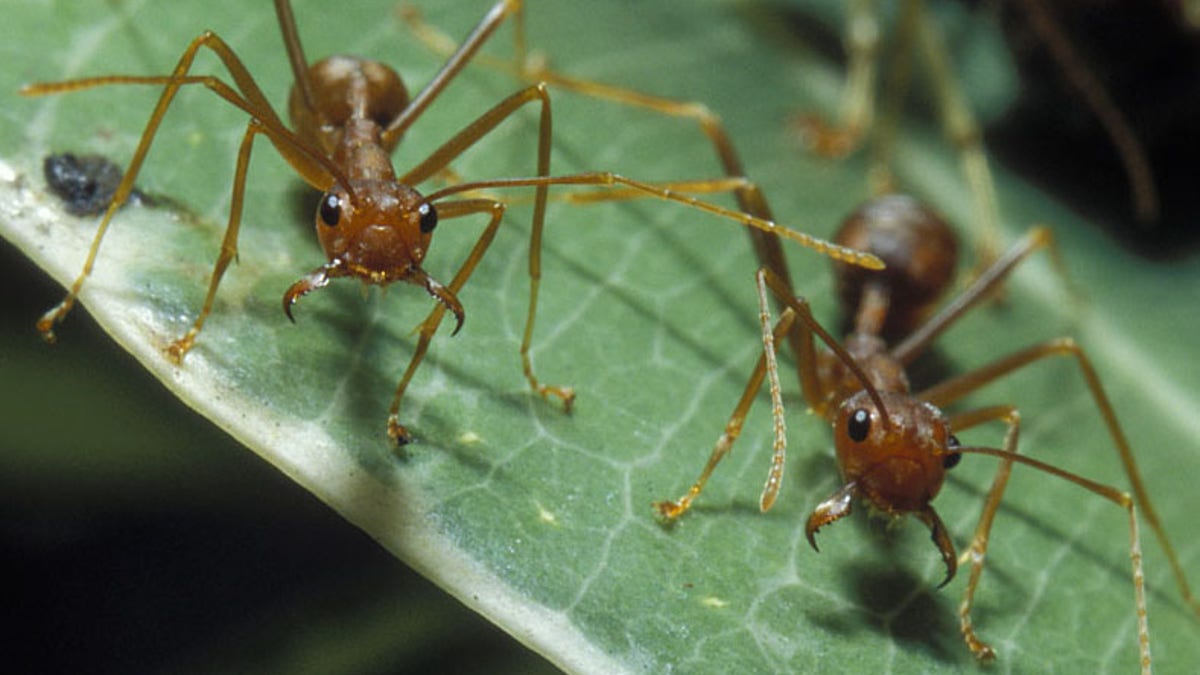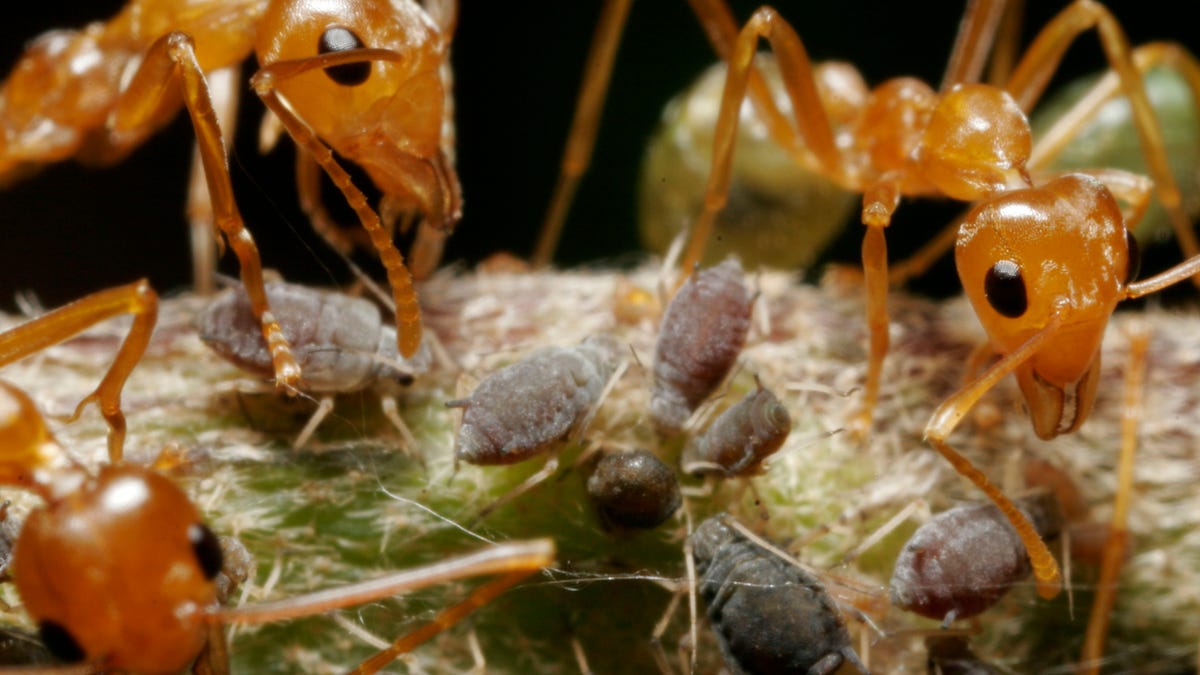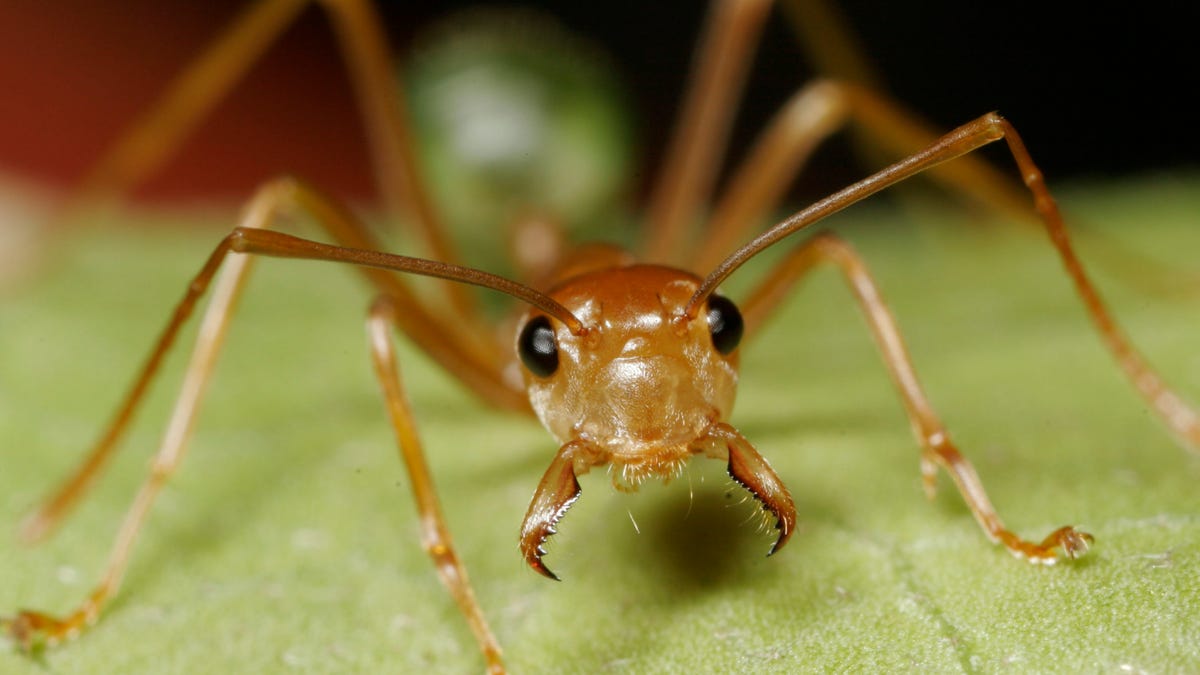
(Kim Aaen, NatureEyes)
There’s a new ant–agonist on the pesticide market. According to a review published in the Journal of Applied Ecology, trees protected by weaver ants have less pests, less plant damage, and show an increased yield when compared to trees sprayed with pesticides. The small, red tree dwellers are also cheaper to use and better for the environment.
What makes the weaver ants so effective is their ability to quickly respond and attack larger intruders. They’re categorized as a “superorganism,” which means that the colony functions like one organism, with individual ants acting as its cells and moving around independently. When an intruder enters their environment, the ants coordinate attacks via pheromones before taking the insect back to their nests of woven leaves to feed the colony. With the crops hanging so close to the nests, they fall under the ants’ protection.

(Kim Aaen, NatureEyes)
To put together his review, Aarhus University bioscience professor Joachim Offenberg pored over approximately 70 recent scientific studies on the use of ants as pest control on nine different crops against various pests in Africa, Australia, and Southeast Asia. One three–year Australian study revealed a 49 percent higher cashew yield in ant–protected trees versus those sprayed with pesticide. Not only that, but the cashews were of a significantly higher quality. Likewise, mango trees protected by ants produced a better quality crop. This, coupled with the ants being cheaper than pesticide, resulted in a 73 percent higher net income.
That’s not to say that similar results were reported across the board.
“There do exist a few cases where the ants alone are not the solution as some pests have adapted and can protect themselves against them,” Offenberg told Foxnews.com. “In these cases, the ants need to be supplemented with other control methods to obtain adequate control. This is called integrated pest management (IPM), when different methods are combined in the same agricultural system.”

(Kim Aaen, NatureEyes)
Still, the ants have been shown in studies on over 50 pests to perform just as effectively as pesticides with crops including palm oil, citrus, and cocoa. Vietnam even underwent a large implementation program ten years ago and has used the ants as pest control ever since.
To introduce the ants to their trees, farmers hang nests in plastic bags from branches and feed them sugar water until the ants have built new nests in their orchards. Strings or vines then act as bridges for the ants to travel from tree to tree. While harmful to pests, the ants pose no threat to humans. Offenberg said that their bite only hurts for a few seconds (as opposed to bites from fire ants).

“During harvest, farmers can use protective clothing so it is not a big problem,” he said. “In Thailand women harvest the larvae of the ants for food, which really makes them angry. However, it is tolerable to these women so it should not be a problem to manage them for plant protection.”
So when can American farmers trade in their pesticides for ant nests? It’s hard to say. As it’s always more secure to use a native species, the weaver ants would have to be screened intensively to see if they would effect non–target species and to make sure they’re non–invasive. Assuming they crawl through testing successfully, the ants could be introduced soon after, possibly to warmer regions like Florida.
“They could potentially be used in climates where they are unable to survive the winter but still may be used to combat pests during the summer,” Offenberg said. “These ants are tropical and need high temperatures. If they die during winter it would be rather safe to use them under these circumstances.”

(Rasmus Lundegaard Nielsen)
